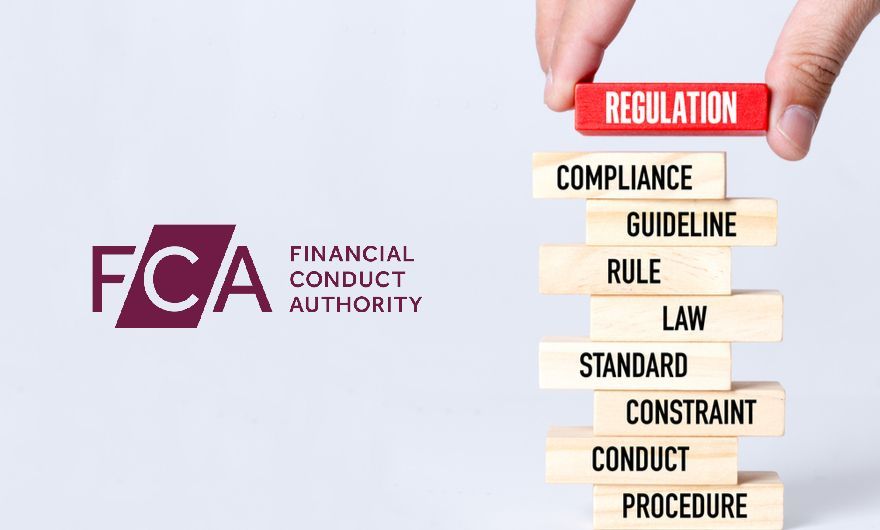News
Ingram Toft

By Ruth Idemudia
•
May 2, 2025
FCA vs. Car Dealers: How UK Borrowers Won Back £1,000s in Hidden Commissions Did you know that millions of UK drivers may have been overcharged on their car finance deals due to hidden commissions? Thanks to a landmark FCA investigation, thousands of borrowers have successfully reclaimed £1,000s—and you could be next. At Ingramtoft.co.uk , we’ve helped countless UK motorists uncover unfair lending practices and secure refunds. In this guide, we’ll share real success stories, expert-backed tactics, and key warnings about claims management pitfalls. Keep reading to discover how you could reclaim your money—without losing a chunk to high fees. How Hidden Commissions Cost UK Drivers Thousands For years, car dealers and lenders secretly earned discretionary commission arrangements (DCAs) , where brokers were incentivized to increase interest rates—leaving borrowers paying more than necessary. The Financial Conduct Authority (FCA) banned these practices in 2021 , but many consumers are still owed refunds. If you financed a car before 2021, you could be eligible for compensation. Real UK Success Stories John from Leeds reclaimed £2,300 after discovering his lender had hidden commission. Sarah from Manchester won £3,750 through the Motor Ombudsman . David from London used the small claims court to recover £1,800 . These cases prove that fighting back works —and you don’t need expensive claims firms to do it. 3 Expert-Backed Ways to Reclaim Your Money 1. Check Your Eligibility & Gather Evidence Look for pre-2021 car finance agreements . Request a copy of your contract from the lender. Check if the dealer had a DCA (discretionary commission arrangement) . Pro Tip: The FCA estimates that up to 40% of car finance deals included hidden commissions —so it’s worth investigating. 2. Use the Motor Ombudsman (Free & Effective) If your lender rejects your claim, escalate it to the Motor Ombudsman , an independent dispute resolution service. ✅ No fees ✅ Legally binding decisions ✅ Faster than court 3. Take Legal Action via Small Claims Court For stubborn lenders, the small claims track (up to £10,000) is a cost-effective option. Fee: Around £60–£455 (recoverable if you win). No solicitor needed —just solid evidence. Case Study: "After my lender refused to pay, I filed a small claim and won £4,100—without a lawyer." – Emma, Birmingham Beware of Claims Management Firms (30% Fee Trap!) Many firms promise "no win, no fee" but take up to 30% of your payout . 🚫 £3,000 refund → £900 lost in fees! ✅ DIY claims keep 100% of your money. Ingramtoft.co.uk Tip: Before signing with a firm, try free routes first (Ombudsman, small claims). FAQs: Your FCA Car Finance Claims Questions Answered 1. How far back can I claim? You can typically challenge deals from the last 6 years (longer in some cases). 2. Will my credit score be affected? No—successful claims don’t impact your credit file . 3. How long does a claim take? Direct complaint: 8–12 weeks. Ombudsman/court: 3–6 months. 4. Can I claim if I no longer own the car? Yes! Refunds are based on the loan agreement , not car ownership. Ready to Claim What’s Yours? Thousands of UK drivers have already won back £1,000s —and you could be next. 🔹 Step 1: Check your old car finance agreements. 🔹 Step 2: Complain directly to the lender. 🔹 Step 3: Escalate to the Ombudsman or court if needed. Need expert help? At Ingramtoft.co.uk , we offer free assessments to check if you’re owed money. 📌 Start your no-obligation claim check today → Ingramtoft.co.uk Have questions? Share your story in the comments below!

By Ruth Idemudia
•
May 2, 2025
Can You Get a Car Finance Refund? UK Rights to Reclaim Overpayments Explained Did you know that millions of UK drivers may have overpaid on their car finance due to hidden commissions and unfair interest rates? With the Financial Conduct Authority (FCA) investigating widespread mis-selling, experts estimate that up to £30 billion could be refunded to consumers. If you’ve ever taken out car finance, you could be owed thousands—but time is running out to claim . At Ingramtoft.co.uk , we specialize in helping drivers like you reclaim mis-sold car finance commissions and secure refunds. This guide breaks down your rights, the FCA’s latest rulings, and step-by-step instructions to file a complaint. Keep reading to discover if you’re eligible—and how to claim your refund before deadlines close. 1. Understanding Car Finance Refunds in the UK What Is a Car Finance Refund? A car finance refund compensates borrowers who were mis-sold agreements due to: Undisclosed broker commissions (e.g., "discretionary commission arrangements" where brokers earned higher payouts for pushing costlier loans). Unfair interest rates inflated to boost lender profits. Pressure-selling or misleading terms (e.g., not explaining total repayment costs). The FCA has ordered lenders to review historical agreements (2014–2021), with payouts averaging £1,000–£5,000 per claim. The £30 Billion Moody’s Estimate A 2023 report by Moody’s Analytics predicted that UK lenders may need to repay up to £30 billion in compensation. Major lenders like Black Horse, Santander, and Barclays are already processing claims. 2. Are You Eligible for a Refund? Key Scenarios You may qualify if your car finance agreement involved: ✅ Hidden Commissions : Brokers didn’t disclose their earnings from your loan. ✅ Inflated Interest Rates : Your rate was higher than necessary to boost commissions. ✅ Mis-Sold Agreements : You weren’t told key terms (e.g., early repayment fees). Example: Sarah from Manchester reclaimed £3,800 after discovering her broker had secretly added 2.5% to her interest rate . 3. How to Claim Your Refund (Step-by-Step) Step 1: Gather Your Documents Your finance agreement (check for commission clauses). Proof of payments (bank statements). Any complaints correspondence. Pro Tip: Use our free eligibility checker at Ingramtoft.co.uk to fast-track your claim. Step 2: File a Complaint with Your Lender The FCA requires lenders to respond within 8 weeks . Use their template letter ( FCA Complaint Guide ) to demand: A full refund of overpaid interest. Compensation for distress/inconvenience. Step 3: Escalate to the Financial Ombudsman (FOS) If rejected, the FOS can force lenders to pay. Over 60% of appealed claims succeed. 4. Deadlines & FCA Updates (2024) Act Now : The FCA may impose a deadline for claims in late 2024. No Win, No Fee Help : Firms like Ingramtoft.co.uk can handle claims on your behalf. FAQs: Quick Answers Q1: How far back can I claim? A: Typically 2014–2021 , but some older cases qualify. Q2: How long does a claim take? A: 3–12 months, depending on lender response. Q3: Can I claim if I no longer have the car? A: Yes! Refunds apply even if you’ve sold or settled the loan. Conclusion: Don’t Miss Out on Your Refund If you financed a car between 2014–2021 , you could be sitting on an unclaimed £1,000–£5,000 payout . With lenders under pressure to compensate borrowers, now is the time to act. Ready to check your eligibility? Get a free, no-obligation assessment with Ingramtoft.co.uk today. 📞 Call us at [Your Number] or visit [Ingramtoft.co.uk/car-finance-refunds] to start your claim! Have questions? Share your story in the comments below—we’re here to help!

By Ruth Idemudia
•
May 2, 2025
Discretionary Commission Arrangements (DCAs) in UK Car Finance: How to Spot Hidden Fees Did you know that millions of UK drivers may have overpaid on their car finance due to hidden commission schemes? Before the FCA’s 2021 ban, lenders like Black Horse and Santander allowed brokers to earn secret commissions through Discretionary Commission Arrangements (DCAs) , often inflating borrowers' interest rates without their knowledge. If you financed a car between 2007 and 2021, you could be owed thousands in compensation —but first, you need to know how to spot these unfair charges. In this guide, we’ll break down: ✅ What DCAs are (and how they cost you more) ✅ Real excerpts from UK finance agreements revealing hidden commissions ✅ How to check if your broker complied using the FCA Register At Ingramtoft.co.uk , we help drivers like you reclaim what’s rightfully yours. Keep reading to uncover expert tips on identifying DCAs and claiming your refund. What Are Discretionary Commission Arrangements (DCAs)? Discretionary Commission Arrangements (DCAs) were a controversial practice where car finance brokers and lenders (such as Black Horse, Santander, and Barclays Partner Finance) secretly increased borrowers’ interest rates to earn higher commissions. How DCAs Worked: The lender set a minimum interest rate for the loan. The broker could discretionarily increase this rate. The higher the rate, the bigger the broker’s commission —often without the customer’s knowledge. The Financial Conduct Authority (FCA) banned DCAs in January 2021 , ruling them unfair. However, if you took out car finance before this date, you might have been affected. How to Spot DCAs in Your Car Finance Agreement Many borrowers had no idea they were paying inflated rates. Here’s how to check if your agreement included a DCA: 1. Look for "Discretionary Commission" or "Difference in Charges" Some contracts explicitly mention broker commissions. Example clauses: "The dealer may receive a commission based on the interest rate you agree to pay." "The lender permits discretionary adjustments to the rate, which may affect the total amount payable." 2. Compare Your Interest Rate to Market Averages If your rate was significantly higher than the lender’s advertised rates at the time, it could indicate a hidden DCA. 3. Check the FCA Register for Compliant Brokers The FCA Register ( www.fca.org.uk/register ) lets you verify if your broker followed regulations. Search their name to see: ✔ Authorisation status ✔ Past regulatory breaches ✔ Commission disclosure compliance How to Claim Compensation for Unfair DCAs If you suspect you were mis-sold car finance, follow these steps: Step 1: Gather Your Documents Finance agreement (check for commission clauses) Loan statements (compare interest rates) Correspondence with the lender/broker Step 2: Submit a Complaint to the Lender Lenders are required to investigate mis-selling claims. If they reject your complaint, you can escalate it to the Financial Ombudsman Service (FOS) . Step 3: Seek Professional Help At Ingramtoft.co.uk , we specialise in helping consumers reclaim unfair car finance charges . Our experts can: 🔍 Review your agreement for hidden DCAs 📄 Handle lender negotiations on your behalf 💰 Maximise your compensation 👉 Start Your Free Claim Assessment Now FAQs: DCA Car Finance Claims 1. How far back can I claim for a DCA? You can typically claim for agreements taken out between 2007 and 2021 . 2. What if my lender no longer exists? You may still claim via the Financial Services Compensation Scheme (FSCS) . 3. How much compensation could I get? Successful claims often recover £1,000–£5,000+ , depending on the loan size and overpayment. 4. How long does a DCA claim take? Most cases resolve within 6–12 months , but complex claims may take longer. Final Thoughts: Don’t Let Hidden Commissions Go Unchecked Millions of UK drivers were unknowingly overcharged due to DCAs—but now, you have the power to fight back. By: ✔ Reviewing your finance agreement ✔ Checking the FCA Register ✔ Filing a claim with expert support …you could secure a significant refund . Ready to check if you’re owed compensation? At Ingramtoft.co.uk , we’ve helped thousands reclaim unfair charges. 📞 Get Your Free DCA Claim Assessment Today Have questions? Drop a comment below or share this guide with someone who might need it!

By Ruth Idemudia
•
May 2, 2025
Can You Get a Car Finance Refund in the UK? FCA Rules Explained Proven Guide to Securing Your Car Finance Refund UK – Expert-Backed FCA Claims 2024 Introduction Did you know that millions of UK drivers may have been mis-sold car finance deals? Recent investigations suggest that unfair APRs, hidden commissions, and irresponsible lending could entitle borrowers to compensation—with Moody’s estimating a staggering £30 billion in potential UK payouts. If you’ve ever taken out a car loan or PCP/HP agreement, you might be eligible for a refund under Financial Conduct Authority (FCA) rules . This guide explains: When you can claim (e.g., undisclosed broker commissions, unaffordable loans). How the FCA’s regulations protect you against mis-selling. Step-by-step processes to dispute your agreement via the Financial Ombudsman Service (FOS) . At Ingramtoft.co.uk , we specialise in helping consumers reclaim what they’re owed—keep reading to uncover how you could secure your refund. 1. Are You Eligible for a Car Finance Refund? (FCA Rules) The FCA has strict rules on fair lending , meaning you could claim if: A. Dealer Commission Arrangements (DCAs) Were Hidden Many lenders allowed brokers to increase interest rates to earn higher commissions—without disclosing this to customers. The FCA banned this practice in 2021 , but you can still claim for older agreements. B. You Were Charged an Unfair APR If your Annual Percentage Rate (APR) was significantly higher than the market average, the loan may have been mis-sold. C. Irresponsible Lending Occurred Lenders must check affordability. If you were pressured into an unaffordable deal , you could claim. 💡 Pro Tip: Check old paperwork for "Discretionary Commission Arrangements" (DCAs) —a key red flag. 2. How to Claim a Car Finance Refund (Step-by-Step) Step 1: Gather Evidence Your finance agreement (check for hidden commissions). Proof of unaffordable repayments (bank statements, credit reports). Step 2: Complain to Your Lender Lenders have 8 weeks to respond. If rejected, escalate to the Financial Ombudsman Service (FOS) . Step 3: Submit to the Financial Ombudsman The FOS can force lenders to pay compensation (up to £430,000 per claim). Step 4: Seek Professional Help Firms like Ingramtoft.co.uk can handle disputes on your behalf, maximising success rates. 3. How Much Compensation Could You Get? Full refunds of interest + 8% compensation (common for DCA cases). Write-offs of remaining balances (if the loan was unaffordable). Moody’s estimates £30B in total UK payouts—don’t miss out! FAQs: Car Finance Refund UK Q1: How far back can I claim? Typically 6 years (or up to 10 years if evidence is strong). Q2: What if my lender has gone bust? You can still claim via the Financial Services Compensation Scheme (FSCS) . Q3: How long does a claim take? 3–12 months , depending on lender cooperation. Conclusion: Act Now to Secure Your Refund If you suspect your car finance deal was unfair, you could be owed thousands . With the FCA cracking down on mis-selling, now is the time to act. 🚗 Ready to check your eligibility? Get a free refund assessment at Ingramtoft.co.uk today! Have questions? Share your story in the comments or contact our expert team.

By Ruth Idemudia
•
May 2, 2025
Are Car Finance Refunds Taxable? HMRC Rules Explained for UK Borrowers Did you know that over £1 billion in car finance mis-selling claims could be paid out in 2025? If you’ve recently received (or are expecting) a lump-sum refund from a PCP, HP, or loan agreement, you might be wondering: Do I need to pay tax on my car finance refund? At Ingramtoft.co.uk , we specialize in helping UK borrowers navigate financial claims—including tax implications. In this guide, we’ll break down HMRC’s rules on car finance refunds, covering: ✅ When your refund is (and isn’t) taxable ✅ Tax treatment of interest repayments and compensation ✅ How to report a payout in your Self-Assessment Keep reading to avoid unexpected tax bills and maximize your refund legally. 1. Are Car Finance Refunds Taxable? HMRC’s Key Rules If you’ve won a mis-selling claim against a lender, your refund typically includes: Repaid interest (the extra charges you were wrongly billed) Compensation (usually 8% interest on top) Admin fees or commission repayments Good news: Most car finance refunds aren’t taxable as income. HMRC treats them as a return of your own money, not a profit. However, there are exceptions. When Is a Car Finance Refund Tax-Free? ✔ Personal loans/PCP/HP agreements – Refunds are usually not taxable if the car was for private use. ✔ Compensation for distress/inconvenience – Generally tax-free under HMRC rules. When Might Tax Apply? ❌ Business use claims – If the car was used for work, part of your refund may be taxable. ❌ Investment-linked payouts – Rare, but if the refund generates further income (e.g., interest), tax may apply. Pro Tip: If you’re unsure, consult a tax advisor or use Ingramtoft.co.uk’s free refund checker to assess your case. 2. Interest Repayments & Compensation: Tax Implications Many refunds include an 8% compensatory interest payment. Here’s how HMRC views it: Refund Component Taxable? Reason Repaid interest (original charges) No Considered a return of overpaid money 8% compensatory interest No (usually) Treated as restitution, not income Additional damages (e.g., distress payments) No Non-taxable under HMRC guidelines Exception: If you’re a business claimant, compensatory interest may be taxable as income. 3. Do I Need to Declare My Refund in a Self Assessment? Most individuals won’t need to report a car finance refund on their tax return. However, you must declare it if: You claimed the finance as a business expense (e.g., company car). The refund generates additional taxable income (rare). Example: You repaid £5,000 in mis-sold interest + £400 compensatory interest. Tax due? None (if personal use). If business-related, you may need to adjust previous tax deductions. Need help? Ingramtoft.co.uk’s tax specialists can review your case for free. 4. FAQs: Car Finance Refunds & Tax Q1. Is a PCP refund taxable if I paid via a business? A: Potentially. If you claimed tax relief on repayments, part of your refund may be taxable. Q2. Do I pay capital gains tax on a car finance refund? A: No. CGT doesn’t apply to refunds—only asset sales. Q3. How does HMRC know about my refund? A: Lenders don’t automatically report payouts, but you must declare taxable amounts. Q4. Can I reinvest my refund tax-free? A: Yes, but any new income (e.g., savings interest) may be taxable. 5. Conclusion: Keep Your Refund Tax-Free Most car finance refunds aren’t taxable , but exceptions exist for business users. To recap: 🔹 Personal refunds = Usually tax-free 🔹 Business claims = Possible tax adjustment needed 🔹 Compensatory interest = Typically exempt Need expert help? At Ingramtoft.co.uk , we’ve helped thousands claim refunds without tax surprises . 🚀 Ready to check your eligibility? Get a free assessment now! Have questions? Share them below or contact our team for personalised advice.

By Ruth Idemudia
•
May 2, 2025
PCP vs. HP Claims: Key Differences in Mis-Selling and Compensation Did You Know Over 50% of Car Finance Agreements Could Be Mis-Sold? If you’ve ever taken out a PCP (Personal Contract Purchase) or HP (Hire Purchase) agreement, you might have been misled about hidden commissions, unfair terms, or excessive interest rates. Thousands of UK drivers are now reclaiming compensation—but the process differs significantly between PCP and HP claims. At Ingramtoft.co.uk , we specialise in helping consumers navigate car finance mis-selling claims. This guide breaks down the key differences between PCP and HP claims , including commission structures, evidence requirements, and typical compensation payouts. Keep reading to discover whether you’re owed thousands—and how to claim what’s rightfully yours. 1. Understanding PCP and HP Finance Agreements Before diving into mis-selling claims, it’s crucial to understand how these finance types work: What Is a PCP (Personal Contract Purchase)? You pay lower monthly instalments compared to HP. At the end of the term, you can: Return the car (with no extra costs, subject to fair wear and tear). Pay a balloon payment to own the vehicle. Trade it in for a new deal. The lender sets a Guaranteed Minimum Future Value (GMFV) , affecting your payments. What Is an HP (Hire Purchase) Agreement? You pay fixed monthly instalments until you fully own the car . No balloon payment—once the final instalment is paid, ownership transfers automatically. Typically higher monthly payments than PCP. Key Takeaway: PCP agreements often involve hidden commissions and inflated interest rates, while HP mis-selling usually relates to undisclosed fees or affordability issues . 2. How Mis-Selling Happens in PCP vs. HP Agreements Common PCP Mis-Selling Tactics ✅ Undisclosed Broker Commissions – Dealers earned secret kickbacks for inflating interest rates. ✅ Misleading GMFV Projections – Overestimating the car’s future value to lower monthly payments. ✅ Pressure Selling – Pushing PCP deals without explaining risks (e.g., excess mileage charges). Common HP Mis-Selling Tactics ✅ Hidden Fees & Charges – Unexpected admin costs or early repayment penalties. ✅ Affordability Failures – Lenders not checking if you could realistically afford repayments. ✅ False Promotions – Advertising "0% interest" deals that later included high APR. Did You Know? The Financial Conduct Authority (FCA) found that over 90% of car finance brokers received discretionary commission , leading to higher costs for consumers. 3. Key Differences in PCP vs. HP Claims Factor PCP Claims HP Claims Commission Structure Often hidden dealer kickbacks (higher interest rates) Typically lower, but may involve hidden fees Evidence Needed Loan agreement, GMFV details, commission disclosures Contract terms, affordability checks, fee breakdown Compensation Range £1,000–£5,000+ (due to inflated interest) £500–£3,000 (often for hidden charges) Claim Complexity Higher (proving commission influence is key) Lower (focus on affordability & transparency) Which Claim Is Right for You? PCP claims are stronger if you suspect undisclosed commissions or unfair interest rates. HP claims are better if you were misled about fees or given an unaffordable loan. Pro Tip: If you’re unsure, Ingramtoft.co.uk offers a free eligibility check to assess your case. 4. How to Claim Compensation for Mis-Sold Car Finance Step 1: Gather Key Documents Your finance agreement (PCP or HP contract). Any emails or letters from the lender/dealer. Proof of repayments and extra charges . Step 2: Check for Mis-Selling Red Flags Were commissions disclosed? Did the dealer pressure you into the agreement? Were the terms (mileage limits, fees) clearly explained? Step 3: Submit a Complaint Contact the lender first —they have 8 weeks to respond. If rejected, escalate to the Financial Ombudsman Service (FOS) . Success Story: "John recovered £4,200 after discovering his PCP deal included a hidden £1,500 broker commission." 5. FAQs: PCP & HP Mis-Selling Claims Q1: How much compensation can I get from a PCP claim? A: Typically £1,000–£5,000+ , depending on interest overpayments. Q2: Can I claim if my HP agreement was years ago? A: Yes! The FCA allows claims up to 6 years after the agreement ends . Q3: Do I need a solicitor to file a claim? A: Not necessarily— Ingramtoft.co.uk handles claims on a no-win, no-fee basis. 6. Conclusion: Take Action on Your Mis-Sold Car Finance If you’ve ever taken out PCP or HP finance , there’s a high chance you were mis-sold the agreement. The key differences lie in commission structures, evidence needed, and compensation amounts —but both can result in significant refunds . Ready to check if you’re owed money? ✅ Get a free, no-obligation assessment at Ingramtoft.co.uk today! ✅ Share your story below —have you faced unfair car finance deals? Don’t wait—claim what’s rightfully yours before deadlines apply!

By Ruth Idemudia
•
May 2, 2025
How to Check If You’re Owed Undisclosed Car Finance Commission in the UK: A Step-by-Step Guide Introduction Did you take out car finance between 2007 and 2021? If so, you could be owed thousands in undisclosed commission —money that was secretly added to your loan by brokers without your knowledge. The Financial Conduct Authority (FCA) has cracked down on this hidden commission scandal, forcing lenders to review millions of cases. Many borrowers are now eligible for full refunds plus 8% interest —but time is running out to claim. In this guide, we’ll explain: ✔ How undisclosed car finance commission works ✔ How to check if you’re owed money ✔ Step-by-step instructions to claim your refund ✔ Deadlines you need to know Keep reading to uncover how you could reclaim thousands—and why acting fast is crucial. 1. What Is Undisclosed Car Finance Commission? Before 2021, many car finance brokers and dealers earned secret commissions by inflating interest rates on loans. These kickbacks were often not disclosed to customers , meaning borrowers paid more than they should have. Key Facts: FCA investigation (2024): The regulator found widespread misconduct, leading to a mass review of car finance agreements . Average refund: Some claimants have received £1,000–£5,000+ back. Who’s affected? Anyone who took out car finance (PCP, HP, or lease) before January 28, 2021 . 💡 Did you know? The FCA estimates up to 40% of car finance deals included hidden commissions. 2. How to Check If You’re Owed Money Step 1: Locate Your Car Finance Agreement Check emails, paperwork, or your lender’s online portal. Look for terms like "discretionary commission" or "DI" (Dealer Interest) . Step 2: Use the FCA Register to Verify Your Broker Visit FCA Register . Search your lender/broker—if they’re regulated, you can claim. Step 3: Check for Hidden Commission Clues High interest rates (e.g., over 10%). No breakdown of broker fees in your contract. Lender names like Black Horse, Santander, or Barclays Partner Finance (common in complaints). 🚀 Pro Tip: If you no longer have paperwork, contact your lender directly or get help from experts like Ingramtoft.co.uk . 3. How to Claim Your Refund Option 1: Complain Directly to Your Lender Use the FCA’s free complaint template ( download here ). Send it to your lender (email or recorded post). Wait up to 8 weeks for a response. Option 2: Escalate to the Financial Ombudsman (FOS) If your lender rejects your claim or offers a low settlement, escalate to FOS . Deadline: You must complain within 6 years of the loan (or 3 years from discovering the issue). Option 3: Use a Claims Specialist (Fast-Track Your Refund) Firms like Ingramtoft.co.uk handle claims for you—maximizing your payout with no upfront fees . 📌 Key Deadline: The FCA may impose a cutoff for claims in 2025 , so act now! 4. How Much Could You Get Back? Full refund of excess interest (often £1,000–£5,000). +8% annual interest on top. Compensation for distress in some cases. Example Case: Loan amount: £10,000 Hidden commission: £2,500 Total refund: £2,500 + 8% interest = £3,200+ 5. FAQs About Undisclosed Car Finance Claims ❓ Can I claim if my loan was years ago? ✅ Yes! You can claim for loans taken out as far back as 2007 . ❓ What if my lender has gone bust? ✅ You may still claim via the Financial Services Compensation Scheme (FSCS) . ❓ How long does a claim take? ⏳ 3–12 months (longer if escalated to FOS). ❓ Do I need a claims firm? ⚠️ Not required, but experts like Ingramtoft.co.uk can speed up the process and increase success rates . Conclusion: Claim Your Money Now! If you financed a car before 2021, you could be sitting on a hidden windfall . Thousands have already reclaimed £1,000s —don’t miss out! 🚀 Next Steps: 1️⃣ Dig out your finance paperwork. 2️⃣ Check for undisclosed commissions. 3️⃣ Submit a complaint (or let experts handle it). Need help? Visit Ingramtoft.co.uk for a free refund assessment today!

By Ruth Idemudia
•
April 30, 2025
Scam-Proof Your Inbox: 10 Essential Tips to Spot Phishing Emails in the UK Introduction Have you ever opened an email that looked just real enough to trick you? With phishing scams in the UK rising by 84% in the past year, fraudsters are getting scarily good at impersonating banks, delivery services, and even government agencies. One wrong click could lead to stolen passwords, drained accounts, or malware infections. But don’t panic—you can fight back. This guide will show you how to spot scam emails , set up multi-factor authentication (MFA) , and report fraud to Action Fraud UK . By the end, you’ll be a phishing-detection pro! Keep reading to lock down your inbox and stay safe from cybercriminals. 1. How to Spot a Phishing Email (UK Scams Edition) Scammers prey on urgency and fear. Here’s what to watch for: ✅ Suspicious sender addresses (e.g., " support@amaz0n.co.uk " instead of "amazon.co.uk") ✅ Urgent threats ("Your account will be suspended in 24 hours!") ✅ Strange links or attachments (Hover to check the URL before clicking) ✅ Bad grammar & spelling (Legitimate companies proofread emails) 📸 [Insert screenshot of a fake Royal Mail scam email] 2. Top 5 UK Phishing Scams Right Now These cons are flooding British inboxes: "HMRC Tax Refund" Scams – Fake rebate offers with malicious links. "Parcel Delivery" Frauds – Fake DHL/Royal Mail tracking alerts. "Bank Security Alert" Hoaxes – Urgent "suspicious activity" warnings. "Netflix Payment Failed" Emails – Stealing credit card details. "Energy Bill Discount" Traps – Ofgem impersonation scams. 💡 Pro Tip: Always verify by contacting the company directly—never via the email’s link. 3. How to Set Up Multi-Factor Authentication (MFA) MFA adds a second layer of security , stopping hackers even if they get your password. Step-by-Step MFA Setup for Major UK Services: 🔒 Gmail : *Settings > Security > 2-Step Verification* 🔒 Microsoft/Outlook : Account Security > Additional Security Options 🔒 UK Banks (e.g., Barclays, HSBC) : Use their app’s built-in MFA 📹 [Insert short GIF/video showing MFA setup] 4. What to Do If You Clicked a Scam Link Act fast! Follow these steps: Disconnect from the internet (Stop malware from spreading). Change passwords (Especially for banking/email). Scan for viruses (Use Malwarebytes or Windows Defender). Report to Action Fraud UK ( www.actionfraud.police.uk ). 5. How to Report Phishing Emails in the UK Forward scam emails to: report@phishing.gov.uk (National Cyber Security Centre) Your email provider (e.g., Gmail’s "Report Phishing" option) 📸 [Insert screenshot of Action Fraud reporting process] FAQs: UK Phishing Scams Q: Can scammers fake a sender’s name? A: Yes! Always check the full email address , not just the display name. Q: Do UK banks ever email links? A: Rarely. They’ll usually ask you to log in via their official app/website . Q: Is texting "STOP" to scam texts effective? A: No—it confirms your number is active. Block & report instead. Conclusion: Stay One Step Ahead of Scammers Phishing scams are evolving, but with vigilance, MFA, and quick reporting , you can protect yourself. 🚨 Take action today: ✔️ Bookmark this guide for quick reference. ✔️ Enable MFA on all critical accounts. ✔️ Share with friends & family —scammers target the vulnerable. Got a suspicious email? Drop it in the comments below, and we’ll help verify it!

By Ruth Idemudia
•
April 30, 2025
Love Bombed and Broke: 5 Shocking Signs You’re Talking to a Romance Scammer (UK Victims Share Their Stories) Introduction Have you ever met someone online who seemed too perfect? Swept you off your feet with grand gestures, only to vanish—along with your money? Romance scams in the UK are skyrocketing, with victims losing £92 million in 2023 alone (UK Finance). These criminals use emotional manipulation, fake identities, and "love bombing" to exploit trust. In this eye-opening post, we dive into real UK romance scam case studies , expose the top red flags , and share expert tips to verify online identities before it’s too late. Whether you’re dating online or know someone who is, this guide could save you from heartbreak and financial disaster. Keep reading to uncover the tactics scammers use—and how to fight back. 1. How Romance Scammers Operate in the UK The "Love Bombing" Trap : Overwhelming affection to fast-track trust. Fake Identities : Stolen photos, fabricated careers, and elaborate backstories. The Financial Hook : Emergency sob stories (e.g., medical bills, stranded abroad). 2. Real UK Victim Case Studies Case 1 : Sarah, 42, lost £50k to a "US soldier" who needed visa funds. Case 2 : James, 58, catfished by a woman who "loved" his crypto investments. 3. 5 Red Flags You’re Being Scammed 🚩 They refuse video calls (always "camera broken"). 🚩 Their profile has few friends/photos (likely stolen). 🚩 They ask for money (even "small loans"). 🚩 They avoid meeting in person (endless excuses). 🚩 Their stories don’t add up (job inconsistencies). 4. How to Verify an Online Love Interest (Actionable tips) Reverse image search (find stolen photos). Check social media footprints (LinkedIn, Facebook). Ask specific questions (scammers script responses). 5. What to Do If You’ve Been Scammed Report to Action Fraud UK . Contact your bank immediately . Seek support (e.g., Victim Support UK). Conclusion Romance scammers prey on loneliness and hope—but knowledge is your best defense. By spotting love bombing , fake identities, and financial demands early, you can protect your heart and wallet. Think you’ve encountered a scammer? Share your story in the comments to warn others, or bookmark this guide to stay safe.

By Ruth Idemudia
•
April 30, 2025
Is the IRS Ready for AI Tax Fraud? Critical Lessons for HMRC Introduction Tax fraud is evolving at an unprecedented pace, with AI-powered scams threatening to overwhelm even the most advanced tax systems. The IRS has faced increasing challenges in detecting sophisticated AI-generated fraud—so what does this mean for HMRC? As cybercriminals leverage deepfake identities, falsified documents, and automated fraud schemes, the UK’s tax authority must act swiftly to close security gaps. HMRC’s current systems, including GOV.UK Verify , may not be fully equipped to handle AI-driven threats. With tax fraud costing the UK billions annually, the need for AI fraud detection , real-time verification , and enhanced document security has never been more urgent. Could HMRC be the next target of large-scale AI tax fraud? Keep reading to uncover the gaps in the UK’s tax security and the tech upgrades needed to stay ahead of cyber criminals. 1. The Rising Threat of AI-Powered Tax Fraud AI is a double-edged sword—while it can enhance fraud detection, criminals are using it to: Generate fake identities using deepfake technology. Automate fraudulent tax refund claims . Manipulate voice and video verification systems . Case Study: The IRS reported a surge in AI-generated phishing scams, with criminals impersonating taxpayers and tax professionals. Could HMRC face similar attacks? 2. Gaps in HMRC’s Current Fraud Detection Systems HMRC relies on GOV.UK Verify and manual checks, but these may not be enough: ✅ Pros: Basic identity verification. ❌ Cons: Limited AI-driven anomaly detection . Slow response to emerging fraud tactics . No real-time document authentication . Key Weakness: Without AI-powered fraud analysis, HMRC risks falling behind cybercriminals. 3. Tech Upgrades HMRC Needs to Implement To combat AI fraud, HMRC should adopt: ✔ AI Fraud Detection Algorithms – Machine learning to flag suspicious patterns. ✔ Blockchain for Tax Documents – Immutable records to prevent forgery. ✔ Biometric Verification – Facial recognition & voice authentication. ✔ Automated Real-Time Audits – Instant fraud alerts for unusual claims. Example: The Estonian tax system uses AI to detect fraud with 98% accuracy —could the UK follow suit? 4. Lessons from the IRS: What HMRC Can Learn The IRS has invested heavily in AI fraud prevention, including: AI-Powered Risk Scoring – Flagging high-risk returns automatically. Enhanced Data Encryption – Securing taxpayer information. Collaboration with Tech Firms – Leveraging private-sector AI tools. Question: Should HMRC partner with UK fintech firms to strengthen its defenses? 5. The Future of Tax Security: AI vs. AI As fraudsters refine their tactics, HMRC must: 🔹 Continuously update AI detection models. 🔹 Educate taxpayers on AI scams. 🔹 Integrate cross-agency data sharing for faster fraud identification. Prediction: By 2026, AI-driven tax fraud could cost the UK £3 billion+ annually if HMRC doesn’t act now. Conclusion: Is HMRC Prepared for the AI Fraud Wave? AI tax fraud is no longer a future threat—it’s happening now. While the IRS is ramping up defenses, HMRC must urgently invest in AI fraud detection, real-time verification, and blockchain security to protect taxpayers. 🚀 Ready to Learn More? Stay ahead of tax fraud trends—subscribe for the latest updates on HMRC’s tech upgrades! 💬 What’s your take? Should HMRC prioritize AI fraud prevention? Comment below!

By Ruth Idemudia
•
May 2, 2025
FCA vs. Car Dealers: How UK Borrowers Won Back £1,000s in Hidden Commissions Did you know that millions of UK drivers may have been overcharged on their car finance deals due to hidden commissions? Thanks to a landmark FCA investigation, thousands of borrowers have successfully reclaimed £1,000s—and you could be next. At Ingramtoft.co.uk , we’ve helped countless UK motorists uncover unfair lending practices and secure refunds. In this guide, we’ll share real success stories, expert-backed tactics, and key warnings about claims management pitfalls. Keep reading to discover how you could reclaim your money—without losing a chunk to high fees. How Hidden Commissions Cost UK Drivers Thousands For years, car dealers and lenders secretly earned discretionary commission arrangements (DCAs) , where brokers were incentivized to increase interest rates—leaving borrowers paying more than necessary. The Financial Conduct Authority (FCA) banned these practices in 2021 , but many consumers are still owed refunds. If you financed a car before 2021, you could be eligible for compensation. Real UK Success Stories John from Leeds reclaimed £2,300 after discovering his lender had hidden commission. Sarah from Manchester won £3,750 through the Motor Ombudsman . David from London used the small claims court to recover £1,800 . These cases prove that fighting back works —and you don’t need expensive claims firms to do it. 3 Expert-Backed Ways to Reclaim Your Money 1. Check Your Eligibility & Gather Evidence Look for pre-2021 car finance agreements . Request a copy of your contract from the lender. Check if the dealer had a DCA (discretionary commission arrangement) . Pro Tip: The FCA estimates that up to 40% of car finance deals included hidden commissions —so it’s worth investigating. 2. Use the Motor Ombudsman (Free & Effective) If your lender rejects your claim, escalate it to the Motor Ombudsman , an independent dispute resolution service. ✅ No fees ✅ Legally binding decisions ✅ Faster than court 3. Take Legal Action via Small Claims Court For stubborn lenders, the small claims track (up to £10,000) is a cost-effective option. Fee: Around £60–£455 (recoverable if you win). No solicitor needed —just solid evidence. Case Study: "After my lender refused to pay, I filed a small claim and won £4,100—without a lawyer." – Emma, Birmingham Beware of Claims Management Firms (30% Fee Trap!) Many firms promise "no win, no fee" but take up to 30% of your payout . 🚫 £3,000 refund → £900 lost in fees! ✅ DIY claims keep 100% of your money. Ingramtoft.co.uk Tip: Before signing with a firm, try free routes first (Ombudsman, small claims). FAQs: Your FCA Car Finance Claims Questions Answered 1. How far back can I claim? You can typically challenge deals from the last 6 years (longer in some cases). 2. Will my credit score be affected? No—successful claims don’t impact your credit file . 3. How long does a claim take? Direct complaint: 8–12 weeks. Ombudsman/court: 3–6 months. 4. Can I claim if I no longer own the car? Yes! Refunds are based on the loan agreement , not car ownership. Ready to Claim What’s Yours? Thousands of UK drivers have already won back £1,000s —and you could be next. 🔹 Step 1: Check your old car finance agreements. 🔹 Step 2: Complain directly to the lender. 🔹 Step 3: Escalate to the Ombudsman or court if needed. Need expert help? At Ingramtoft.co.uk , we offer free assessments to check if you’re owed money. 📌 Start your no-obligation claim check today → Ingramtoft.co.uk Have questions? Share your story in the comments below!

By Ruth Idemudia
•
May 2, 2025
Can You Get a Car Finance Refund? UK Rights to Reclaim Overpayments Explained Did you know that millions of UK drivers may have overpaid on their car finance due to hidden commissions and unfair interest rates? With the Financial Conduct Authority (FCA) investigating widespread mis-selling, experts estimate that up to £30 billion could be refunded to consumers. If you’ve ever taken out car finance, you could be owed thousands—but time is running out to claim . At Ingramtoft.co.uk , we specialize in helping drivers like you reclaim mis-sold car finance commissions and secure refunds. This guide breaks down your rights, the FCA’s latest rulings, and step-by-step instructions to file a complaint. Keep reading to discover if you’re eligible—and how to claim your refund before deadlines close. 1. Understanding Car Finance Refunds in the UK What Is a Car Finance Refund? A car finance refund compensates borrowers who were mis-sold agreements due to: Undisclosed broker commissions (e.g., "discretionary commission arrangements" where brokers earned higher payouts for pushing costlier loans). Unfair interest rates inflated to boost lender profits. Pressure-selling or misleading terms (e.g., not explaining total repayment costs). The FCA has ordered lenders to review historical agreements (2014–2021), with payouts averaging £1,000–£5,000 per claim. The £30 Billion Moody’s Estimate A 2023 report by Moody’s Analytics predicted that UK lenders may need to repay up to £30 billion in compensation. Major lenders like Black Horse, Santander, and Barclays are already processing claims. 2. Are You Eligible for a Refund? Key Scenarios You may qualify if your car finance agreement involved: ✅ Hidden Commissions : Brokers didn’t disclose their earnings from your loan. ✅ Inflated Interest Rates : Your rate was higher than necessary to boost commissions. ✅ Mis-Sold Agreements : You weren’t told key terms (e.g., early repayment fees). Example: Sarah from Manchester reclaimed £3,800 after discovering her broker had secretly added 2.5% to her interest rate . 3. How to Claim Your Refund (Step-by-Step) Step 1: Gather Your Documents Your finance agreement (check for commission clauses). Proof of payments (bank statements). Any complaints correspondence. Pro Tip: Use our free eligibility checker at Ingramtoft.co.uk to fast-track your claim. Step 2: File a Complaint with Your Lender The FCA requires lenders to respond within 8 weeks . Use their template letter ( FCA Complaint Guide ) to demand: A full refund of overpaid interest. Compensation for distress/inconvenience. Step 3: Escalate to the Financial Ombudsman (FOS) If rejected, the FOS can force lenders to pay. Over 60% of appealed claims succeed. 4. Deadlines & FCA Updates (2024) Act Now : The FCA may impose a deadline for claims in late 2024. No Win, No Fee Help : Firms like Ingramtoft.co.uk can handle claims on your behalf. FAQs: Quick Answers Q1: How far back can I claim? A: Typically 2014–2021 , but some older cases qualify. Q2: How long does a claim take? A: 3–12 months, depending on lender response. Q3: Can I claim if I no longer have the car? A: Yes! Refunds apply even if you’ve sold or settled the loan. Conclusion: Don’t Miss Out on Your Refund If you financed a car between 2014–2021 , you could be sitting on an unclaimed £1,000–£5,000 payout . With lenders under pressure to compensate borrowers, now is the time to act. Ready to check your eligibility? Get a free, no-obligation assessment with Ingramtoft.co.uk today. 📞 Call us at [Your Number] or visit [Ingramtoft.co.uk/car-finance-refunds] to start your claim! Have questions? Share your story in the comments below—we’re here to help!

By Ruth Idemudia
•
May 2, 2025
Discretionary Commission Arrangements (DCAs) in UK Car Finance: How to Spot Hidden Fees Did you know that millions of UK drivers may have overpaid on their car finance due to hidden commission schemes? Before the FCA’s 2021 ban, lenders like Black Horse and Santander allowed brokers to earn secret commissions through Discretionary Commission Arrangements (DCAs) , often inflating borrowers' interest rates without their knowledge. If you financed a car between 2007 and 2021, you could be owed thousands in compensation —but first, you need to know how to spot these unfair charges. In this guide, we’ll break down: ✅ What DCAs are (and how they cost you more) ✅ Real excerpts from UK finance agreements revealing hidden commissions ✅ How to check if your broker complied using the FCA Register At Ingramtoft.co.uk , we help drivers like you reclaim what’s rightfully yours. Keep reading to uncover expert tips on identifying DCAs and claiming your refund. What Are Discretionary Commission Arrangements (DCAs)? Discretionary Commission Arrangements (DCAs) were a controversial practice where car finance brokers and lenders (such as Black Horse, Santander, and Barclays Partner Finance) secretly increased borrowers’ interest rates to earn higher commissions. How DCAs Worked: The lender set a minimum interest rate for the loan. The broker could discretionarily increase this rate. The higher the rate, the bigger the broker’s commission —often without the customer’s knowledge. The Financial Conduct Authority (FCA) banned DCAs in January 2021 , ruling them unfair. However, if you took out car finance before this date, you might have been affected. How to Spot DCAs in Your Car Finance Agreement Many borrowers had no idea they were paying inflated rates. Here’s how to check if your agreement included a DCA: 1. Look for "Discretionary Commission" or "Difference in Charges" Some contracts explicitly mention broker commissions. Example clauses: "The dealer may receive a commission based on the interest rate you agree to pay." "The lender permits discretionary adjustments to the rate, which may affect the total amount payable." 2. Compare Your Interest Rate to Market Averages If your rate was significantly higher than the lender’s advertised rates at the time, it could indicate a hidden DCA. 3. Check the FCA Register for Compliant Brokers The FCA Register ( www.fca.org.uk/register ) lets you verify if your broker followed regulations. Search their name to see: ✔ Authorisation status ✔ Past regulatory breaches ✔ Commission disclosure compliance How to Claim Compensation for Unfair DCAs If you suspect you were mis-sold car finance, follow these steps: Step 1: Gather Your Documents Finance agreement (check for commission clauses) Loan statements (compare interest rates) Correspondence with the lender/broker Step 2: Submit a Complaint to the Lender Lenders are required to investigate mis-selling claims. If they reject your complaint, you can escalate it to the Financial Ombudsman Service (FOS) . Step 3: Seek Professional Help At Ingramtoft.co.uk , we specialise in helping consumers reclaim unfair car finance charges . Our experts can: 🔍 Review your agreement for hidden DCAs 📄 Handle lender negotiations on your behalf 💰 Maximise your compensation 👉 Start Your Free Claim Assessment Now FAQs: DCA Car Finance Claims 1. How far back can I claim for a DCA? You can typically claim for agreements taken out between 2007 and 2021 . 2. What if my lender no longer exists? You may still claim via the Financial Services Compensation Scheme (FSCS) . 3. How much compensation could I get? Successful claims often recover £1,000–£5,000+ , depending on the loan size and overpayment. 4. How long does a DCA claim take? Most cases resolve within 6–12 months , but complex claims may take longer. Final Thoughts: Don’t Let Hidden Commissions Go Unchecked Millions of UK drivers were unknowingly overcharged due to DCAs—but now, you have the power to fight back. By: ✔ Reviewing your finance agreement ✔ Checking the FCA Register ✔ Filing a claim with expert support …you could secure a significant refund . Ready to check if you’re owed compensation? At Ingramtoft.co.uk , we’ve helped thousands reclaim unfair charges. 📞 Get Your Free DCA Claim Assessment Today Have questions? Drop a comment below or share this guide with someone who might need it!
